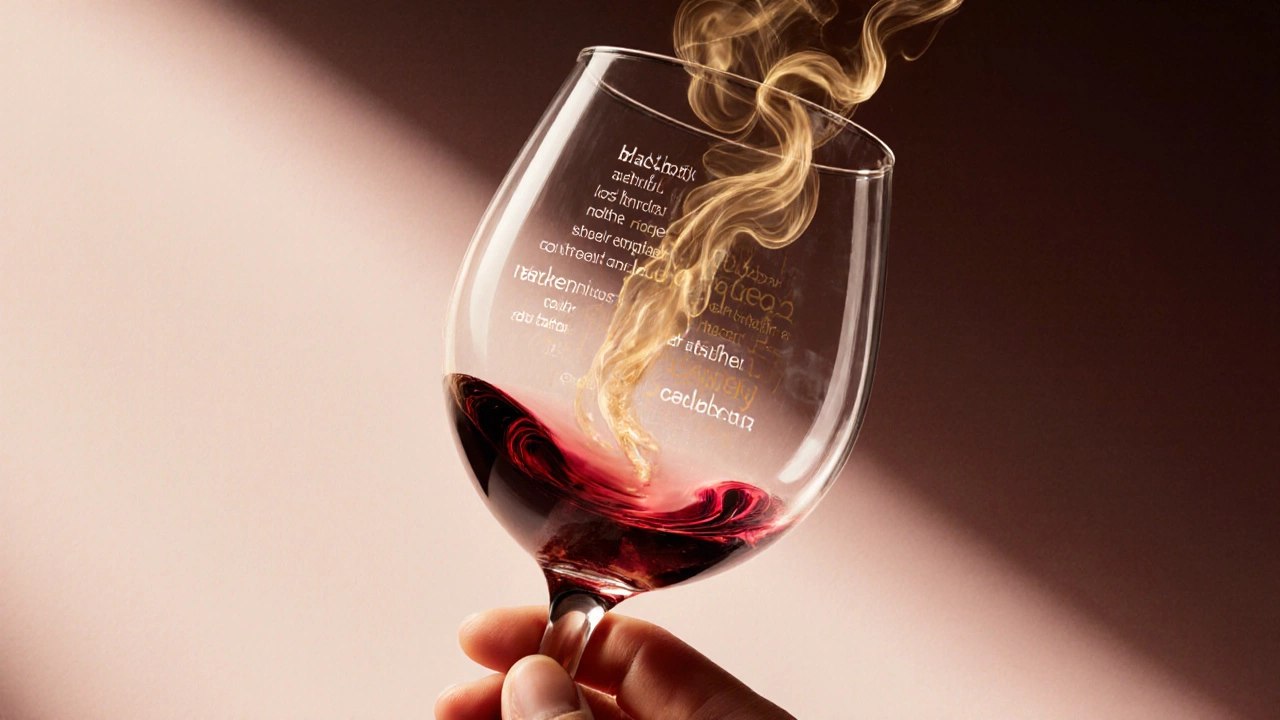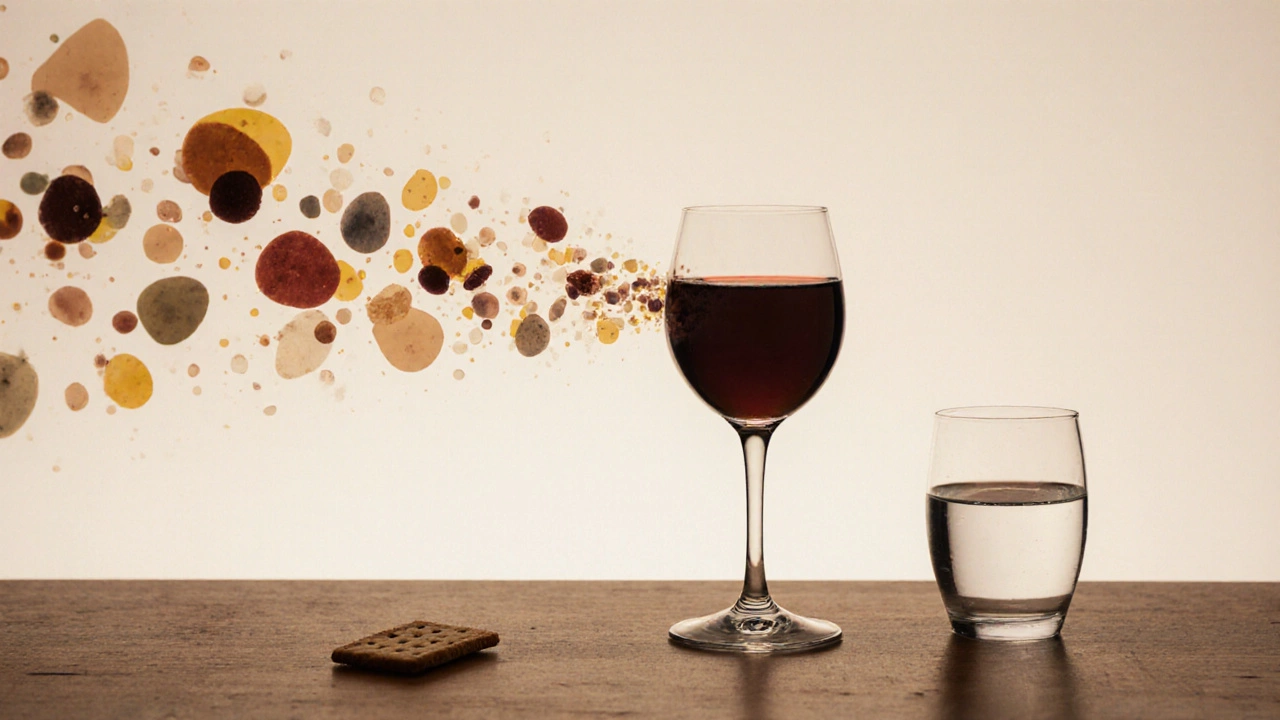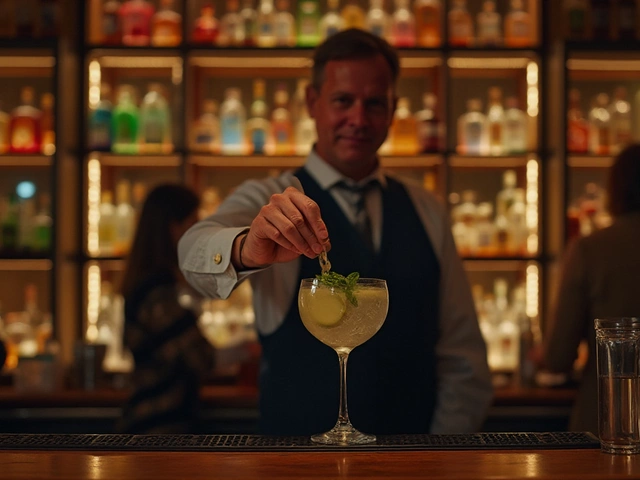Wine Temperature Guide Calculator
Why Temperature Matters
A 2022 Wine.com analysis found 41% of bad tasting experiences were due to wrong temperature. Too cold dulls flavors, while too warm makes alcohol overpowering. The right temperature enhances aroma, flavor, and balance.
Pro Tip: A red wine straight from the fridge should sit for 20-30 minutes before tasting. If it's too warm, chill it for 10 minutes.
Wine tasting isn’t just about sipping and saying "it’s good." It’s a deliberate, sensory experience that turns a simple drink into a story you can smell, see, and feel. Whether you’re at a vineyard, a dinner party, or just opening a bottle at home, knowing the right steps makes all the difference. You don’t need a fancy degree or expensive tools-just a glass, some patience, and a little curiosity.
Step 1: Look at the Wine
Start by holding your glass up against a white background, like a napkin or a tablecloth. Tilt it slightly, about 45 degrees, and check the color. Red wines can range from deep purple to brick red, depending on age and grape type. White wines shift from pale lemon to golden amber. The intensity of color tells you something: a darker red often means a fuller body, while a pale white might be light and crisp. Look closely at the edges. If the wine has a slightly orange or brown tint around the rim, it’s likely older. Clarity matters too-good wine should be clear, not cloudy. Cloudiness can mean it wasn’t filtered properly or has gone bad. And don’t forget the legs. After swirling the wine gently, watch how it drips down the sides of the glass. Thick, slow-moving legs usually mean higher alcohol or sugar content. It’s not a perfect science, but it’s a clue.Step 2: Swirl It Gently
Swirling isn’t just for show. It’s the key to unlocking the wine’s aroma. When you swirl, you let oxygen mix with the wine, which releases hundreds of volatile compounds that give it flavor. Do it right: hold the glass by the stem, not the bowl, and make small circles for 15 to 20 seconds. You’re not trying to spill it-you want a gentle vortex about 2 to 3 centimeters wide. Studies from UC Davis show that swirling increases aroma release by up to 40%. That’s why professionals always do it before smelling. Skip this step, and you’re missing a big part of what the wine has to offer. Don’t worry if you’re clumsy at first. Even a few gentle spins help.Step 3: Smell the Wine
Now bring the glass to your nose. Don’t stick your nose deep into the glass-keep it about an inch above the rim. Inhale slowly. Then, take another sniff, this time with your mouth slightly open. Research from E. & J. Gallo Winery shows this technique activates 35% more of your olfactory receptors. What are you smelling? Start broad. Is it fruity? Floral? Earthy? Then get specific. In red wines, you might catch blackberry, plum, or leather. Whites often show citrus, apple, or mineral notes. The top of the glass holds lighter aromas like flowers or herbs. The bottom holds heavier ones like spice or smoke. Master Sommelier Pascaline Lepeltier calls this "nose mapping." It’s a skill you build over time. If you’re new to this, don’t stress about naming every scent. Just notice what stands out. A 2022 Wine Folly survey found that 78% of beginners struggle most with smelling. That’s normal. The more you practice, the better you’ll get. Try this: count how many distinct smells you can identify before you take a sip. Five is a good beginner target.Step 4: Taste the Wine
Take a small sip-about a tablespoon. Don’t gulp. Let it roll around your mouth. Pay attention to three things: sweetness, acidity, and texture. Sweetness is easy to spot. If your tongue tingles or feels sticky, the wine has residual sugar. Dry wines feel clean. Acidity makes your mouth water. High-acid wines like Sauvignon Blanc make your cheeks pucker slightly. That’s a good thing-it keeps the wine fresh. Low-acid wines can taste flat. Texture comes from tannins (in reds) and alcohol. Tannins are the drying, grippy feeling on your gums and tongue. Think of it like strong black tea. Wines with high tannins (like Cabernet Sauvignon) can feel rough when young but soften over time. Alcohol adds warmth. A wine over 14% ABV will feel hotter on the back of your throat. Here’s something most people miss: retronasal olfaction. When you swallow or exhale through your nose after sipping, aromas travel up from your throat to your nose. That’s where 80% of what you think is "taste" actually comes from. It’s why wine tastes different when you breathe out after swallowing.
Step 5: Think About the Finish
The finish is what happens after you swallow. How long does the flavor stick around? A short finish (under 5 seconds) means a simpler wine. A long finish (15 to 30 seconds or more) often signals quality. Premium wines linger. You might still taste fruit, spice, or even a hint of oak. Some experts, like the Sommelier Company, say finish length is the most important quality indicator. Others, like UC Davis professor Roger Boulton, argue it’s too subjective. The truth? It’s useful, but not absolute. A long finish doesn’t guarantee a wine is better-it just means it’s more complex. Don’t rush this step. Wait. Let the aftertaste fade. That’s when you notice subtle notes you missed before-maybe a touch of graphite, wet stone, or vanilla.What You Need to Taste Like a Pro
You don’t need much, but the right tools help:- Glass: Use a clear, stemmed glass. ISO tasting glasses are ideal, but any tulip-shaped wine glass works. Avoid wide, shallow glasses-they let aromas escape.
- Temperature: Serve sparkling wines at 3-7°C (38-45°F), whites at 8-12°C (46-54°F), and reds at 15-18°C (59-64°F). Too cold, and flavors dull. Too warm, and alcohol burns.
- Cleansers: Between wines, eat a plain cracker or sip water. This resets your palate. Bread, apples, or even unsalted crackers work. Avoid strong flavors like chocolate or coffee.
- Order: Taste from light to heavy. Start with sparkling, then whites, then rosés, then light reds, then full-bodied reds. Save sweet wines for last. Tasting six wines in a row? You’ll lose accuracy after the fourth. Take breaks.
Common Mistakes and How to Avoid Them
Many people skip the basics and wonder why they don’t taste anything. Here’s what usually goes wrong:- Skipping the swirl: You’re missing 30-50% of the aromas. Always swirl.
- Too cold or too warm: A 2022 Wine.com analysis found 41% of bad tasting experiences were due to wrong temperature.
- Trying to name every scent: Don’t panic if you can’t say "black currant" or "wet slate." Just notice if it smells fruity, earthy, or spicy.
- Tasting too many wines: After six, your nose gets tired. Sensory accuracy drops 35%. Limit yourself to 4-5 wines per session.
- Ignoring the finish: The aftertaste tells you more than the first sip.

How to Improve Your Tasting Skills
The best way to get better? Taste more, but with focus.- Try blind tastings. Pour two wines into identical glasses. Guess the grape, region, or price. It forces you to rely on your senses, not labels.
- Use the WSET or Wine Folly aroma wheels. They list common descriptors-from "green apple" to "leather"-to help train your nose.
- Keep a tasting journal. Write down what you smelled, tasted, and felt. Note the wine’s name, vintage, and price. Over time, patterns emerge.
- Join a tasting group. Sharing notes with others helps you hear new perspectives. Reddit’s r/wine community has over 2 million members who post daily.
Most people think wine tasting is about expertise. It’s not. It’s about attention. The more you slow down and really pay attention, the more the wine reveals.
Professional vs. Casual Tasting
There’s a difference between tasting to judge and tasting to enjoy. Professionals use the 5-step method: See, Swirl, Sniff, Sip, Savor. It’s detailed, time-consuming, and designed for evaluation. In wine competitions or certification exams, this is the standard. For everyday drinking? Most people use a simplified 3-step version: Look, Smell, Taste. A 2022 Wine Enthusiast survey found 68% of casual drinkers skip swirling and skip the finish. That’s fine. Wine is meant to be enjoyed, not dissected. The goal isn’t to become a sommelier. It’s to taste more deeply. Even one extra minute of attention can turn a regular glass into a memorable moment.What’s Changing in Wine Tasting Today
The world of wine tasting is evolving. In 2024, the WSET updated its tasting grid to include more descriptors for New World wines-like Australian Shiraz or Chilean Carmenère-so it’s not just focused on European styles. New tools are emerging too. The Coravin Model Six, released in September 2023, lets you pour wine without removing the cork-and keeps it at perfect temperature for weeks. Some tasting rooms now use AR labels that guide you through steps with your phone. And the numbers show it’s catching on. In 2023, over 110,000 people worldwide earned WSET certifications, up from 50,000 in 2015. Experts predict that by 2028, nearly half of regular wine drinkers will use formal tasting techniques. But not everyone agrees. Master Sommelier Laura Maniec warned in April 2024 that too much structure can scare people away. "Enjoyment must remain the foundation," she said. And she’s right. The process should help you appreciate wine more-not make it feel like a test.Do I need special wine glasses to taste wine?
No, but they help. A clear, tulip-shaped glass that narrows at the top traps aromas better than a wide, flat glass. If you don’t have wine glasses, any clean, clear glass will work. The key is to be able to swirl without spilling and to smell without your nose hitting the rim.
How many wines should I taste at once?
For best results, stick to 4-5 wines per session. After that, your sense of smell and taste start to fade-research shows accuracy drops by 35% after six wines. If you’re tasting more, take breaks, rinse your mouth with water, and eat a plain cracker between each one.
Can I taste wine without swirling it?
Yes, but you’ll miss a lot. Swirling adds oxygen, which wakes up the wine’s aromas. Studies show it releases 30-50% more scent compounds. If you’re in a hurry, skip it-but you won’t get the full experience. Even a few gentle swirls make a difference.
What’s the best temperature for tasting red wine?
The ideal range is 15-18°C (59-64°F). Too cold, and the tannins feel harsh and the flavors dull. Too warm, and the alcohol becomes overpowering. If your red is straight from the fridge, let it sit for 20-30 minutes before tasting. If it’s too warm, chill it for 10 minutes.
Why do some wines taste bitter or dry?
That’s tannins. They’re natural compounds found in grape skins, seeds, and stems-especially in red wines. Tannins create a drying, grippy feeling on your gums and tongue. It’s not bad-it’s part of the structure. Young reds like Cabernet Sauvignon are often tannic. Over time, they soften. If it’s too harsh, pair it with food, especially fatty meats or cheese.
How long does it take to get good at wine tasting?
You’ll notice improvements after just 5-10 tastings. Recognizing basic flavors like fruit or spice takes a few sessions. Identifying specific aromas like "blackberry" or "wet stone" takes more time-usually 40-50 tastings. The key isn’t memorizing terms. It’s paying attention. Keep notes, taste regularly, and don’t compare yourself to experts.


